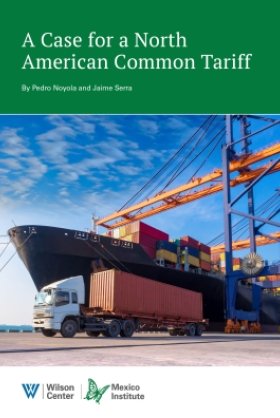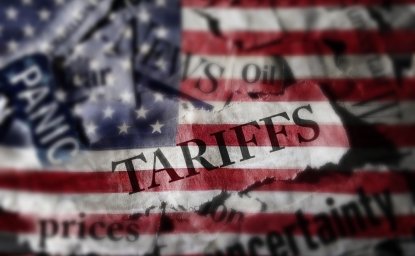A Case for a North American Common Tariff


On February 1, 2025, the United States government unilaterally announced that it would apply tariffs of up to 25% on imports from Mexico and Canada, and 10% on imports from China. The United States argued that a 1977 law grants discretionary powers to the Executive to address “economic emergencies,” in this case caused by the illegal importation of fentanyl and illegal migration. Nonetheless, the measures announced defy economic logic and strategic coherence. For example, if the United States applied the tariffs as announced, a Chinese product could be exported temporarily to Mexico, then reexported as a Chinese good to the United States and pay a lower tariff (10%) than a similar Mexican export that did comply with the existing trade agreement’s (USMCA) rule of origin (25%).
Immediately after the unilateral announcement, the governments of Mexico and Canada, each with its own arguments, called the tariff increases unjustified and in violation of the USMCA, and threatened to impose tariff and non-tariff restrictions on their imports from the United States. The United States then agreed to hit the “pause” button when Mexico agreed to send ten thousand elements of the National Guard to the northern border and Canada announced it would strengthen bilateral cooperation on its southern border. During the “pause,” Mexico and Canada agreed with the United States to review trade issues, but the format of those reviews remains unclear. The back and forth has been chaotic.
Beyond the head-scratching unilateral announcements, “tit-for-tat” reactions and improvised negotiations, the current impasse can trigger a regional and global retaliatory spiral with potentially devastating results: on the one hand, the end of free trade in North America and, on the other, the collapse of the multilateral trading system. In particular, the regional conflict could destroy the connective tissue that has glued the economies of Mexico, the United States and Canada for 35 years, since the original treaty (NAFTA) came into force. The impasse could lead to the repudiation of the USMCA and a cascade of unilateral measures that would break existing economic connectors, such as the trade in oil, gas, wood and minerals between Canada and the United States; the exchange of agro-industrial products between Mexico and the United States; and the trilateral flow of goods in complex manufacturing chains. Uncertainty pervades the economies, with the ever-present risk that at any moment the Parties may at any time trigger another conflict, with its corresponding circular firing squad. The current state of affairs is clearly unstable.
North American exporters and importers wonder whether regional free trade will survive the impasse. The answer to this query must take into account two zeitgeist matters: in the United States, a disenchantment with the global production model in broad sectors of its population, which translates to antipathy for trade agreements and organizations far removed from their popular representatives; and in Mexico, a two-tiered economy, the first tier highly productive and fundamentally aspirational, the second one submerged in a low productivity and welfare-based environment.
To regain the needed popular support in the United States and stimulate total factor productivity in Mexico, the USMCA needs to reinforce regional complementarity with a unified trade policy, but the current agreement regulates a free trade zone with independent trade policies. We propose that North America adopt a common tariff as an anchor for the natural evolution of the free trade area to a customs union. The common tariff would implement the “tariff unification” actions proposed by the Mexican government since 2024.
We reason for the proposal in four parts. First, we review salient features of North America’s transition to free trade and its economic convergence. We then discuss the transition of the agreement from NAFTA to the USMCA and conclude that an opportunity to progress to a better model was lost. In the third section, we comment on the shortcomings of the USMCA and in the fourth, we suggest transitioning the USMCA into a customs union with a common tariff.
We deliberately present the proposal with broad brushstrokes, to trigger a conversation aimed at keeping North America highly productive and competitive with the rest of the world. The conversation in Canada and the United States should seek greater popular consensus in favor of intraregional trade. In Mexico, it should be part of a broader and inclusive discourse that births a new social contract with aligned incentives, transparent institutions, and a unified rules-based society.
Authors


Mexico Institute
The Mexico Institute seeks to improve understanding, communication, and cooperation between Mexico and the United States by promoting original research, encouraging public discussion, and proposing policy options for enhancing the bilateral relationship. A binational Advisory Board, chaired by Luis Téllez and Earl Anthony Wayne, oversees the work of the Mexico Institute. Read more

Explore More
Browse Insights & Analysis
Water Security at the US-Mexico Border | Part 1: Background




